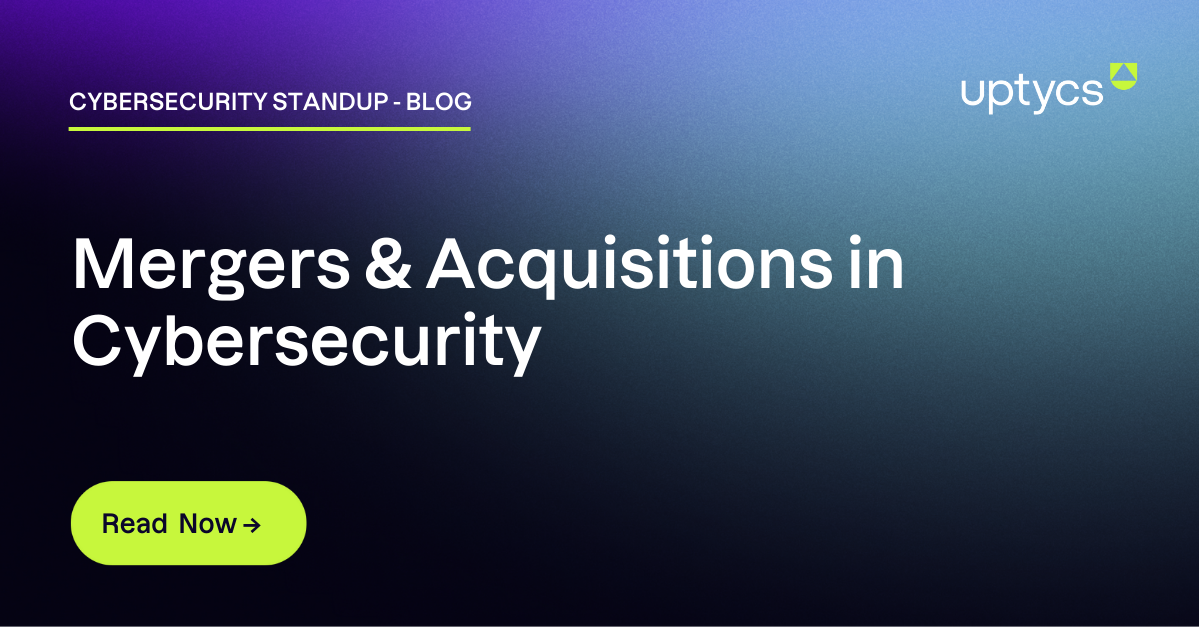Mergers and acquisitions (M&A) are common business practices where companies combine forces to achieve strategic goals. M&A can help companies expand their reach, enter new markets, increase profits, and gain competitive advantages.
The downside in today's digital age is that breaches can cause significant financial losses, damage to reputation, and legal liabilities. Bringing another company into the fold means taking on the security risks they bring with them, thus making cybersecurity crucial in the due diligence process of the M&A.
For a chief information security officer (CISO), navigating the M&A process can be challenging, as the board and executive team are typically not fluent in cybersecurity. Therefore, CISOs must approach the M&A process from a business perspective and communicate in a language that the board and executive team can understand.
What are the Biggest Cybersecurity Concerns Resulting From M&A?
One of the biggest concerns is the potential for the acquiring company to inherit the cybersecurity risks of the acquired company. This can include vulnerabilities in systems, networks, and applications, as well as potential data breaches or other security incidents.
Another concern is the potential for new suppliers, vendors, and third-party providers to introduce vulnerabilities into the software supply chain. This can create additional attack vectors and increase the risk of supply chain attacks.
Additionally, the integration of inherited IT systems and networks can introduce new vulnerabilities and increase the attack surface for cyber threats. It's essential to ensure the integration process is conducted securely and that proper security controls are implemented to mitigate the risks.
It’s also important to understand that cultural and organizational differences between the acquiring and acquired companies can create cybersecurity risks. This can include security policies, practices, and awareness that can lead to gaps in defenses.
Effective due diligence, risk management, and cybersecurity controls are crucial to mitigate such cybersecurity concerns and ensure a successful M&A transaction.
😎Watch Uptycs Cybersecurity Stand Up below where we discuss the importance of cybersecurity in the M&A due diligence process.
How to Reduce Risk in the M&A Process
Conduct thorough due diligence – Companies should conduct a thorough cybersecurity due diligence assessment of the target company before completing any transaction. This can include a review of its security policies, practices, and controls.
Integrate cybersecurity into the M&A process – Cybersecurity should be integrated into the M&A process from the beginning to ensure potential risks are identified and addressed early on. Cybersecurity professionals should be involved in the due diligence assessment, integration planning, and post-merger integration phases.
Identify and mitigate software supply chain risks – Vulnerabilities in inherited third-party software, suppliers, and vendors need to be identified and mitigated. This can include evaluating the security vulnerabilities and practices of third-party providers, conducting security assessments of the software supply chain, and implementing security controls to reduce supply chain attack risks.
Implement effective cybersecurity controls – Companies should implement effective cybersecurity controls to protect their IT systems, networks, and data. This includes access controls, encryption, employee training, and incident response plans.
Ensure cultural alignment – Engage all employee concerns and be clear about who is responsible for what. Be sensitive to the fact that the redundancy created by a merger creates a great deal of fear that employees will lose their jobs. You want to ensure cultural alignment between the acquiring and acquired companies to promote awareness of cybersecurity risks and adherence to security policies and practices.
Translating Security Risks into Business Language
The technical details of cybersecurity risks can be complex, and it's essential to translate them into language that business decision-makers can comprehend. Without clear communication, leadership might rely solely on ratings companies, like BitSight or Security Scorecard, to assess cyber risk. But ratings companies typically focus on externally observable flaws and vulnerabilities that might not capture the full picture of cybersecurity risks.
Using real-life scenarios and examples, the CISO should demonstrate the potential impact of cybersecurity risks to the executive team. Focus on the most significant risks and explain how they can affect the business. Translate technical jargon into business language using metrics the executive team can relate to, such as financial impact or reputational damage. Explain the trade-offs and help them make informed decisions.
CISOs should also collaborate with other business functions, such as legal and finance, to align cybersecurity with the overall M&A business goals. Working together, they can ensure that due diligence is conducted thoroughly and that cybersecurity risks are addressed during the integration process.
How Uptycs Can Help
Uptycs CNAPP and XDR can ease the burden of assessing inherited systems by revealing the hidden risks and providing evidence to support the assessment. Uptycs helps create a comprehensive inventory of acquired assets, including servers, laptops, containers, and cloud infrastructure, thereby providing a clear understanding of the new IT landscape and potential risk exposure.
You can detect software vulnerabilities in the acquired infrastructure and analyze historical telemetry data to determine if the acquired entity has been exposed to previously disclosed threats, thus enabling you to take necessary actions to mitigate potential risks. Plus, with Uptycs agentless solution, you can quickly perform a full-cloud risk assessment in minutes. Later during integration you can add the more comprehensive agent-based toolset to strengthen your overall cybersecurity posture.
Learn more about Uptycs agentless and agent-based tooling—the best of both worlds!







